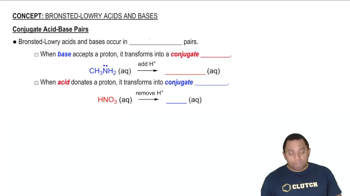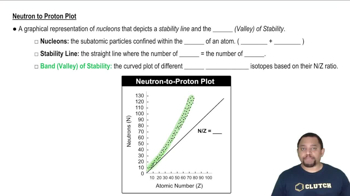Here are the essential concepts you must grasp in order to answer the question correctly.
Conjugate Acid-Base Pairs
In acid-base chemistry, a conjugate acid is formed when a base accepts a proton (H+). This concept is essential for understanding how substances interact in chemical reactions, particularly in Brønsted-Lowry acid-base theory, which defines acids as proton donors and bases as proton acceptors.
Recommended video:
Conjugate Acid-Base Pairs
Protonation
Protonation is the process by which a molecule gains a proton, resulting in the formation of a conjugate acid. For hydroxylamine (NH2OH), protonation occurs at the nitrogen atom, which has a lone pair of electrons that can bond with a proton, leading to the formation of its conjugate acid.
Recommended video:
Hydroxylamine Structure
Hydroxylamine (NH2OH) consists of an amine group (NH2) and a hydroxyl group (OH). Understanding its molecular structure is crucial for predicting its behavior in acid-base reactions, including how it can act as a base and what its conjugate acid will be when it accepts a proton.
Recommended video:




